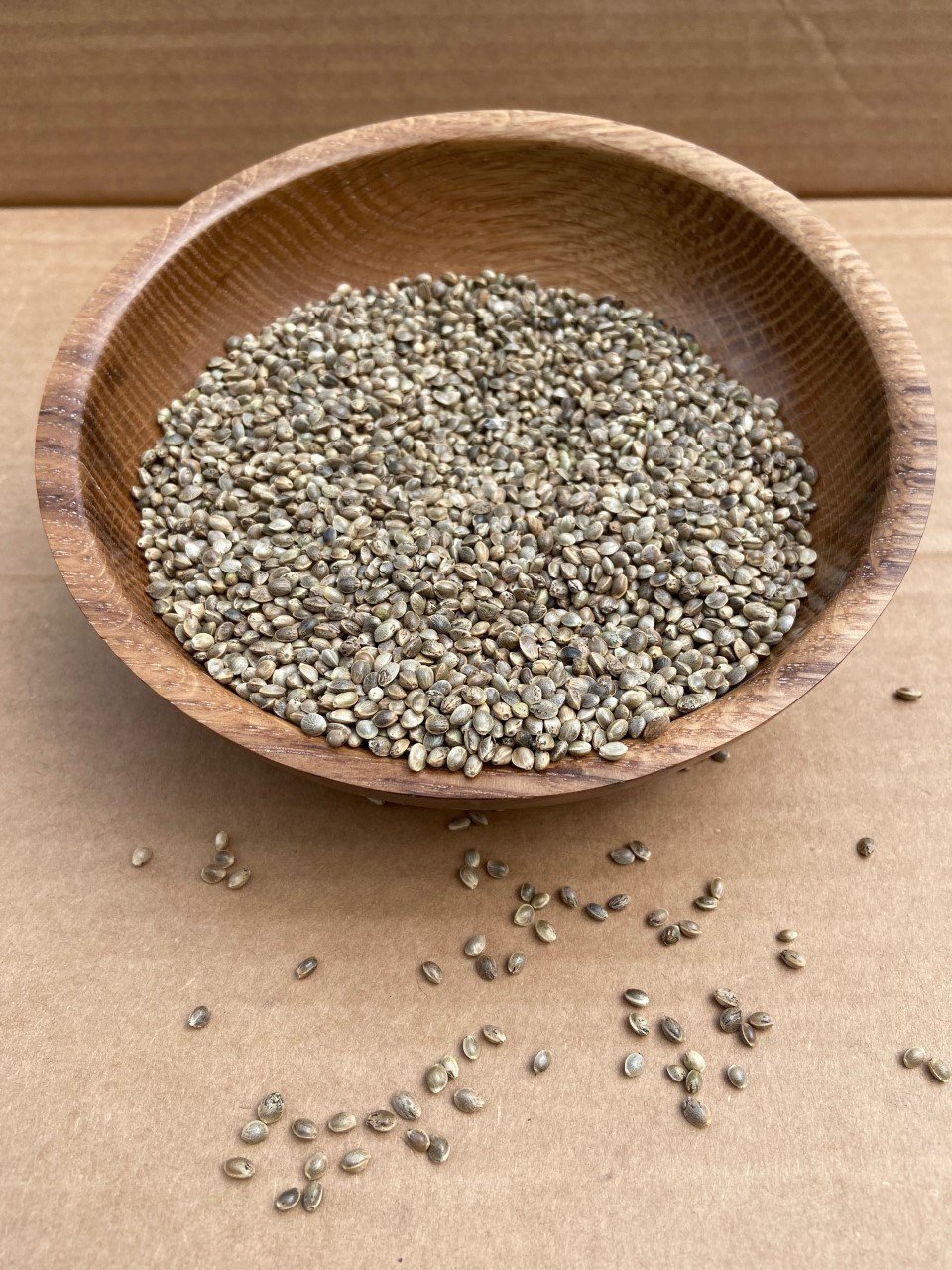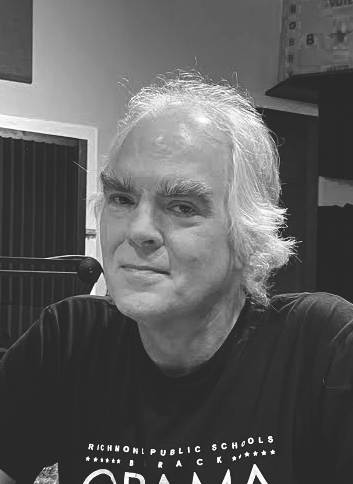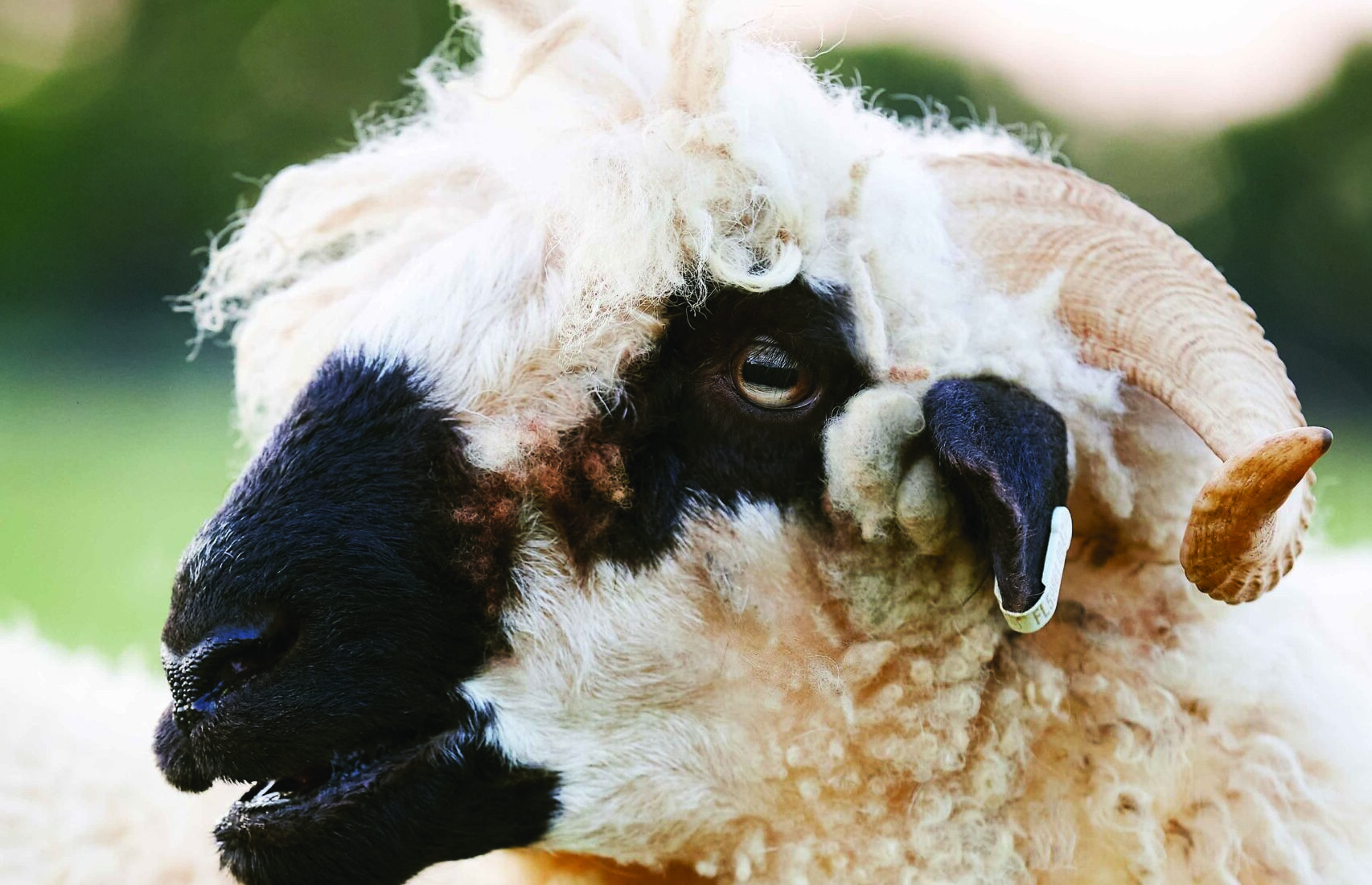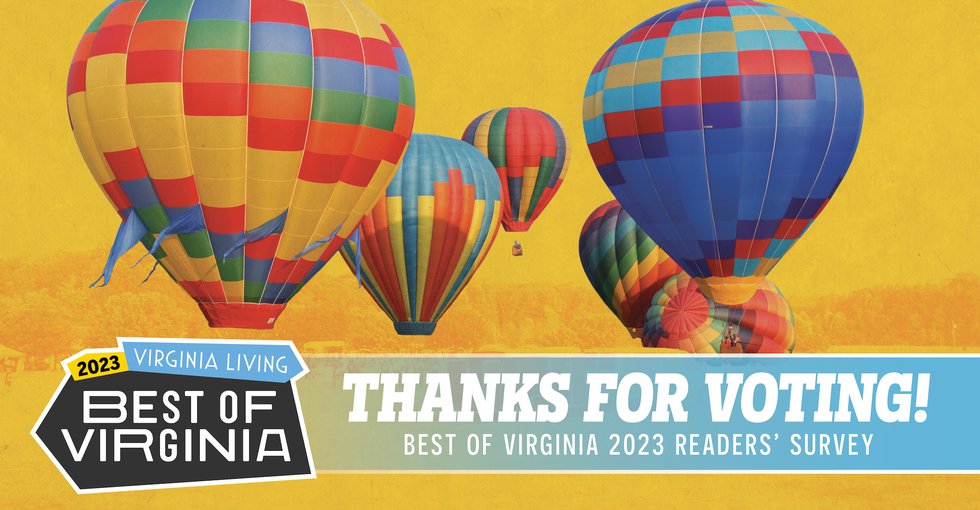Virginia’s newfound hype for hemp is actually taking us back to our roots.

If you want to see how the times are a-changin’, wander into the sleepy town of Elkton, population 2,900, in Rockingham County. Here, 17 miles east of Harrisonburg, you’ll find a small downtown dotted with thrift stores and antique shops, a post office, bustling basketball courts, a locally owned hamburger restaurant (existing peaceably next to a McDonald’s), and a soon-to-be full-service marijuana dealership.
“The town has totally accepted us,” says Abner Johnson, managing director of Pure Shenandoah. The new hemp hub is situated on Spotswood Avenue, across from the Elkton police station. “The cops are fine with us being here,” the 22-year-old says while wearing a T-shirt made from hemp cloth. “They say they’ve never had a problem with someone high on pot, unlike violent drunks.”
The town fathers are stoked about Pure Shenandoah, too. Bill Kyger, chairman of the Rockingham County Board of Supervisors, joined Gov. Ralph S. Northam and other state officials in touting the company’s arrival last year. “We’ve been welcomed with open arms,” says A.K. Koyee, the hempery’s operating partner. “People from the community walk in off the street and want to see the place, and we take the time to show them. They are our neighbors.”
The Heart of Hemp

Housed in the former Casey Jones building, once a blue jeans factory, Pure Shenandoah H.Q. has a pungent and familiar aroma. A bale of dried stalk the size of a golf cart sits conspicuously in the large front area. Against the wall sit piles of trash bags filled with leafy, sticky buds. “We grew this on our own, last season,” Abner says, pointing to the big hemp ball. “We work with a bunch of Virginia farms, but we also have our own 15-acre fiber plot. This will sall go to make animal bedding.”
The back half of this 12,000-square-foot building is already utilized as an active extraction lab (with equipment that would make Dr. Frankenstein green with envy); the large front space will soon be a retail store selling clothing, skin creams, balms, oils, and foods made from hemp. By 2024, when recreational marijuana and its offshoots will be legal to sell in Virginia, this will become a legally licensed, all-purpose weed dealer selling specially cultivated buds, smokable hemp flour, edibles, and medicinal marijuana of various potencies.
But Pure Shenandoah intends to deal in all parts of the cannabis plant, not just the psychotropic female variety recently legalized for personal use in small amounts in Virginia. Pure Shenandoah also seeks to be a catalyst for hemp fiber, a beneficial part that has a whole lot of upsides … and no intoxicating effects.
“We like to say that we’re bringing the heart of hemp back to Virginia, back to where it started,” says company CEO Tanner Johnson. “We’re going to be the powerhouse in Virginia and on the East Coast for hemp production, and it’s going to come from that fiber side of things.”
Abner, Tanner, and their brothers Jake and Talbot, along with various other family members and close collaborators, such as Koyee, have seen the future, and it’s woven from hemp.
Hemp fiber has thousands of uses, from clothing to paper to packaging materials to animal bedding.
— Tanner Johnson, Pure Shenandoah
Unlimited Potential

Hemp fiber has unlimited potential, Tanner says. “It has thousands of uses, from clothing to paper to packaging materials.” Pure Shenandoah’s main fiber client, to start, will be the Waynesboro-based Old Dominion Hemp Company, the country’s largest dealer in animal bedding, which normally sources its materials from China and Europe.
“In the [marijuana] market, Pure Shenandoah is one of several, but they are the only ones really pursuing the fiber side of the plant,” says Glenn Rodes of Riverhill Farms in nearby Port Republic, the first farmer to receive a Virginia hemp grower’s license back in 2015. “They’re young, energetic, and seem to be able to make things happen. I’m hoping that they can bring some fiber processing equipment online and generate a market for fiber around here.”
Working strictly with Virginia farmers, and consulting with proven growers like Rodes, Pure Shenandoah has planted 1,000 acres of fiber seed this year. To put that in perspective, 2,000 acres were grown in all of Virginia in 2020.
It’s also building a $3.3 million hemp processing facility two miles away. The state-of-the-art operation is being assisted by a $50,000 grant from the Governor’s Agriculture and Forestry Industries Development Fund; Rockingham County has matched that with local funds. It’s the third Virginia hemp processing plant to receive state funds, joining Golden Piedmont Labs in Halifax County and Wythe County’s Appalachian BioMass Processing.
Your tax dollars subsidizing pot? Legal small-town weed outlets? Some might look at all of this and argue that Virginia is going to hell in a handbasket. But this newfound hype over hemp is actually taking us back to our roots.
“Where the Pentagon sits today was once a large hemp field, grown for the USDA. Hemp is in our blood, it’s in our history.”
— Jason Amatucci, founder, Virginia Hemp Coalition
Of Weed and Washington

Hemp Harvesting 2018
Sara Marie Massee is forcefully—but carefully—smashing a plant stalk with a huge wooden hammer. “It looks like I’m taking the outside of the plant out, but I’m actually taking out the inside,” the historic interpreter says as she crunches in a very precise way. “There’s a woody pith, and then there are the fibers, and then there’s bark outside of that. What we’re doing is getting rid of the pith.”
Massee and her associate Megan Romney can tell you everything you want to know about George Washington’s life as a farmer—the famous sheep manure experiment, how all of his silkworms died, and the value he placed on hemp. Today, they are hand-processing weed grown in a 20-by-20-foot plot on Pioneer Farm at Washington’s historic Mount Vernon home, next to corn, wheat, flax, and other crops the first president was known to have grown.
“In the 1760s, Washington had been focusing on tobacco as a cash crop,” Romney says. “But it was losing money and was really rough on the land here, and he was searching for alternatives. So, he looked to hemp as something to make money with.” The Founding Father eventually elected to make wheat his main output, but he continued to grow hemp as well, using it for repair netting and rope for his lucrative fisheries.

Hemp Harvesting 2018
A regular task for Washington’s slaves, extracting pliable, usable hemp fiber from acres of cannabis was laborious, grueling work involving implements reminiscent of medieval torture devices, like a miniature bed of nails used to comb and straighten bark and fiber. “This is a slow process,” Massee says as she runs the plant hairs through the spikes. “It takes much longer than you think it should. But the fibers will start to separate and be more pliable and easy to use.” 24-hour-a-day lighting, guard dogs. It was crazy.”
Norton knew it was important to tell the story of hemp because it was so integral to early America. “For a time in the 17th and 18th centuries, it was illegal for colonial farmers not to plant it,” he says, because England needed all it could get for its warships. Hemp rope was the finest available and stood up well to salt water.
When the 2014 U.S. Farm Bill allowed hemp to be grown—initially for research purposes—for the first time since the crop was outlawed in the 1930s, Mount Vernon was the first Virginia historic site to plant the stuff, under the supervision of University of Virginia researchers. “Washington mentions hemp in his writings and diaries nearly 100 times,” says Norton. “He basically tells his land manager to plant hemp wherever he could and to choose fertile ground.” This weed was not, Norton stresses, for George to get high. “It was corn whiskey and rum in those days,” he says. “The only smoking that was done around Mount Vernon were Martha Washington’s hams.”
How do the crowds at today’s Mount Vernon react to George’s hemp field? “People seem to react positively,” says Romney. “But there are giggles, and we’ve heard all the jokes.”
“Washington mentions hemp in his writings and diaries nearly 100 times. He basically tells his land manager to plant hemp wherever he could…”
— Dean Norton, Mount Vernon horticulturist
“Hemp is in Our Blood”

Hemp Harvesting 2018
There is much misinformation about hemp and America’s earliest days circulating online, despite numerous corrections from sources as disparate as the Smithsonian and FactCheck.org. Yes, hemp was grown at Jamestown and sativa seeds were brought over on the Mayflower. No, the Declaration of Independence was not written on hemp paper. And, as Norton stresses, Washington and the other Founding Fathers were not avid tokers. But nearly all of them grew hemp, valued it, talked about it, and believed in it.
As president, Thomas Jefferson—who never actually said that hemp was “the first necessity to the wealth and protection of the nation,” despite the internet—signed off on America’s first patent: a hemp threshing device. He valued the weed enough to take personal risks, illegally smuggling seeds from China while serving as U.S. ambassador. Franklin, whose famous experiment on electricity involved a kite held aloft by a hemp string, owned a factory that turned hemp into parchment. John Adams, James Madison, and Henry Clay all grew ganja. Everyone did.
Even with the subsequent revolution of the cotton gin and the emergence of the timber industry, hemp was widely used until the early 20th century, when a fear of the psychotropic variety of the plant began to cloud American views on cannabis as a whole. In 1937, all forms of it, including hemp, were made federally illegal under the Marihuana Tax Act (sic). “People still have a misconception that this stalk of hemp is going to have enough THC to get them high,” says Samuel Murphy, manager of historic trades at Mount Vernon. “They don’t educate themselves on the differences within the plant. And we can blame propaganda, like the movie Reefer Madness, for that.”
Despite its outlaw reputation over the past 80 years, marijuana is seeded throughout America’s timeline, says Jason Amatucci, founder of the Virginia Hemp Coalition. “Where the Pentagon sits today was once a large hemp field that was grown for the USDA. Hemp is in our blood, it’s in our history.”
Separating the Parts of the Plant

“The hemp plant is amazing,” raves Amatucci. “All of it—the flower, the seeds, the fiber—every piece of that plant can be utilized.”
Amatucci has been a leading advocate for the legalization of marijuana and for industrial hemp’s use as a commercial commodity. He’s been a primary drafter of every industrial hemp bill passed by the Virginia General Assembly and has worked on federal legislation, including the drafting of the Industrial Hemp Farming Act. When Northam signed off on making Virginia the 16th state to decriminalize possession of marijuana, “It was a big deal,” Amatucci says. “For Virginia, it’s going to be a totally different landscape out there. And now is the time for investment. The government should come in and help even more, and if they are supporting all of these other crops, they need to support hemp.”
But it’s been hard for politicians and regulators to separate the different parts of this pliable plant. When industrial hemp was legalized in 2018, it was defined, under that year’s farm bill, to be any cannabis plant or derivative thereof that contains not more than a 0.3 percent THC quotient. In March, Virginia changed the state law to allow THC quotient to be as high as 1 percent. It’s a small change that makes a big difference, especially to farmers growing industrial hemp, who have been forced to destroy crops that exceeded 0.3 percent THC. “It’s hard to control that ratio,” says farmer Glenn Rodes, who applauds the new law.
Still, it only pertains to raw materials—not consumable products made from hemp—and conflicts confusingly with federal law, says Amatucci. “There needs to be a distinction between regulating intoxicating and nonintoxicating hemp—whether it be CBD flour or grain. They need their own separate regulations.” Lawmakers also need to, well, chill out, he adds. “We need to relax on this stuff. It doesn’t hurt anybody, it’s not a bad thing, not scary. We don’t need to protect ourselves from this plant. We need to grow it, market it, and sell it because it is a superior plant.”
Long-Term Market

Hemp is useful and in demand for reasons that have nothing to do with cannabinoids or the flowering female portions of the plant, echoes Thomas Malone, the founder of Arena Group, a consulting firm for businesses seeking to enter Virginia’s cannabis industry. Those drivers are “the fiber and the grain [male] side of hemp. They have different growing and harvesting methods and have completely different uses than flour has to offer.”
“The fiber side can do so many things,” says Tanner Johnson of Pure Shenandoah. “You can use it as biofuel, and you can build a house with it.”
Robert Morton, an engineering professor and member of James Madison University’s industrial hemp research team, says that hemp products are increasingly common in everyday life. “If you’ve ridden in a Volvo, the plastic panels have hemp fibers to make them flexible.”
“Hemp fiber is probably where the long-term market is,” says Erin Williams, the industrial hemp program manager who issues hemp growing licenses to farmers for the Virginia Department of Agriculture and Consumer Services. “Right now, the processors we have can’t keep up with the crop that’s being grown.”
Regarding marijuana, Moline says, in the future, Virginia will probably look a lot like California or Colorado, with legal dispensaries as common as liquor stores, perhaps state-run and regulated by local communities. “That may not be the case on January 1, 2024, which is when they see sales possibly beginning. It’s going to take time, and the regulations are still up in the air.”
For now, that regulatory uncertainty also keeps a vibrant market for industrial hemp from emerging, Rodes says. He plants a small amount among his corn, soybeans, and barley, but says that fellow farmers aren’t yet as eager. “I think if we get a processor up and going, it will be a cash crop in the next few years. But we’ll have to have processors scattered throughout the growing regions of the state. It could develop quickly, or it could be a slow process.” Virginia’s new marijuana legalization can only help, he adds. “That should take a lot of pressure off of the hemp growing segment.”

A Cash Crop

The Commonwealth is uniquely poised to become a leader in the cannabis industry, Amatucci and other advocates argue. That’s because conditions in many parts of the state are perfect for growing the stuff. “There are areas in the country, Kentucky, North Carolina, Virginia, that are very good for growing hemp. And Virginia, because of its interstate highways and its port, is particularly situated to [plug into] a global hemp industry.”
Thomas Malone of Arena Group agrees. “This is a very versatile plant that can grow in a lot of different conditions, but the temperate climate we have here, the steady rainfall, the sunshine, the good soil, make it perfect.” Malone can see a future where hemp is a cash crop for the state. “Virginia is a top five in the country in commodities such as tomatoes, grapes, apples, all grown orchard-style, which is exactly how hemp flour is grown. And I think farmers will find a lot of similarities between growing those traditional crops and hemp or marijuana.”
“Historically, it’s always been grown here,” Glenn Rodes echoes. The Rockingham County farmer participated in a study with James Madison University researchers to see if traditional farming equipment can be used to cultivate hemp. (It can, with small modifications.) “We do have a very good climate and good soil here along the river bottoms. It’s not hard to grow here.” He laughs. “Although it doesn’t exactly grow like a weed.”
Advice for Budding Farmers

Erin Williams, at the Virginia Department of Agriculture, has issued more than 900 industrial hemp licenses this year. She encourages budding farmers to have a plan before starting. “Know where you are going to sell your hemp crop, and start small so that your mistakes are small. Initially, people were hearing that it was easy to grow, and I think Virginia hemp growers have learned that it’s something that can be very labor-intensive. There’s more to it than just planting it and forgetting it.”
This is all unfamiliar territory for the farming community, says Robert Morton at JMU. “If you grow corn, you know there’s a dedicated market, dedicated regulations, you know where to get the seed from, and the fertilizer and pesticides. That doesn’t exist for hemp. So it’s a big uncertainty for the farmer.”
Still, the professor sees hope in projects such as Pure Shenandoah. “It sounds to me that they are aware of the pitfalls. They are focused on solving the dual problems of a dedicated supply as well as a functional, effective processing facility.” Importantly, Morton adds, they plan to use all parts of the plant. “To make it work, you just about have to.”
It’s generally agreed that more research is needed. “Even with its history, in many ways, this is a new crop,” Tanner Johnson says.
“In the United States, because hemp was prohibited for so long, we’ve lost a little bit of knowledge,” echoes Sara Marie Massee at Mount Vernon. “There’s a much bigger tradition in Russia and Eastern Europe, where it never went away.”
So, in a sense, researchers and growers are right back to where George Washington was—figuring out how to best grow hemp in the rich Virginia soil and how to reconcile all of this unique plant’s different qualities. “He tried broadcasting the seed, sewing it in drills, planting it on high rows,” says Mount Vernon’s Dean Norton. “Washington tried many different things with hemp. But he also lamented the fact that he hadn’t separated the male from the female plant.”
This article originally appeared in the August 2021 issue.








